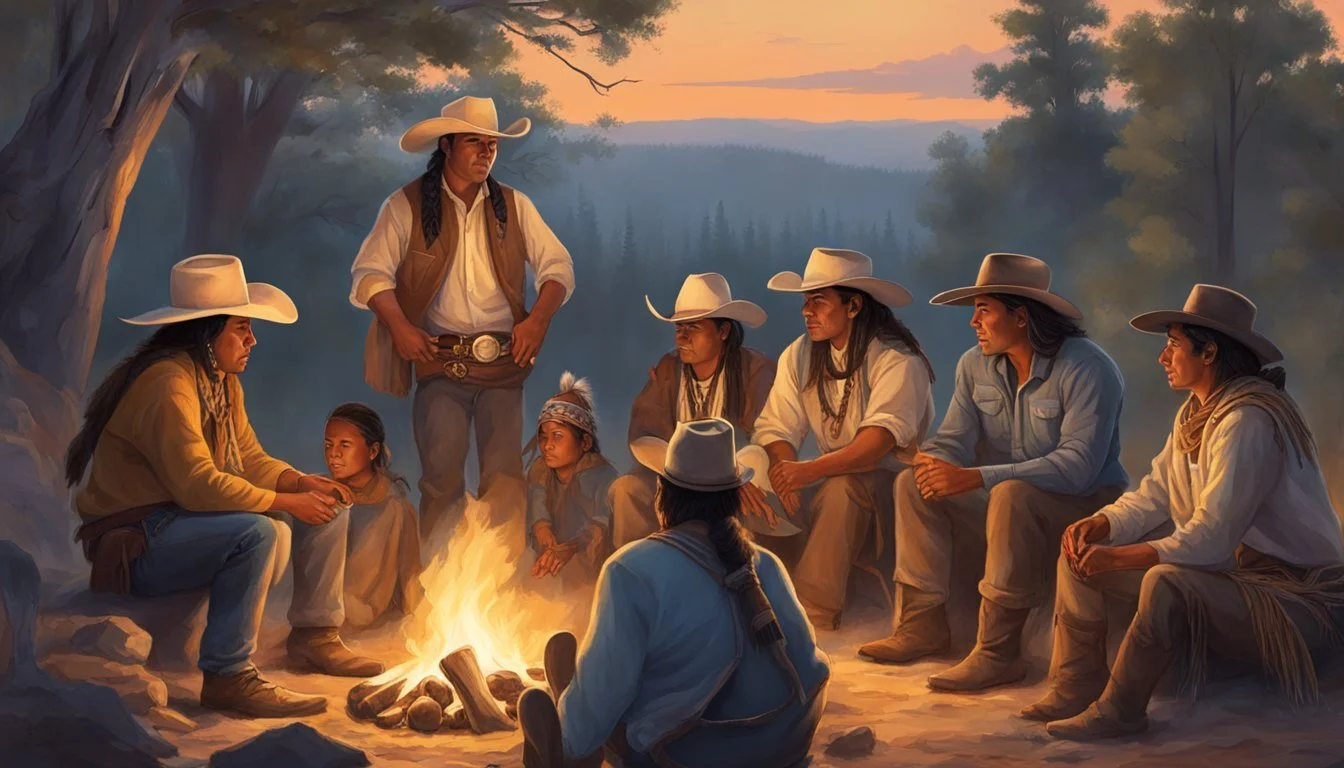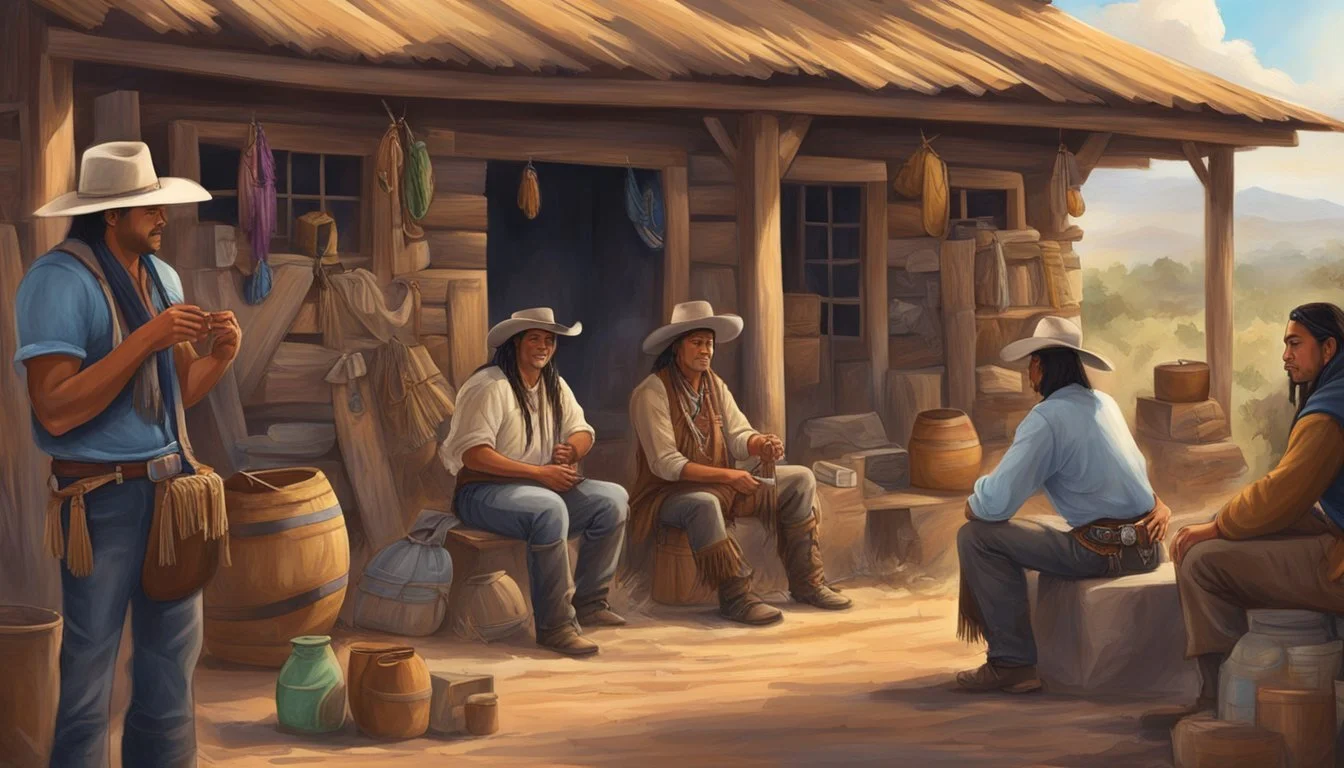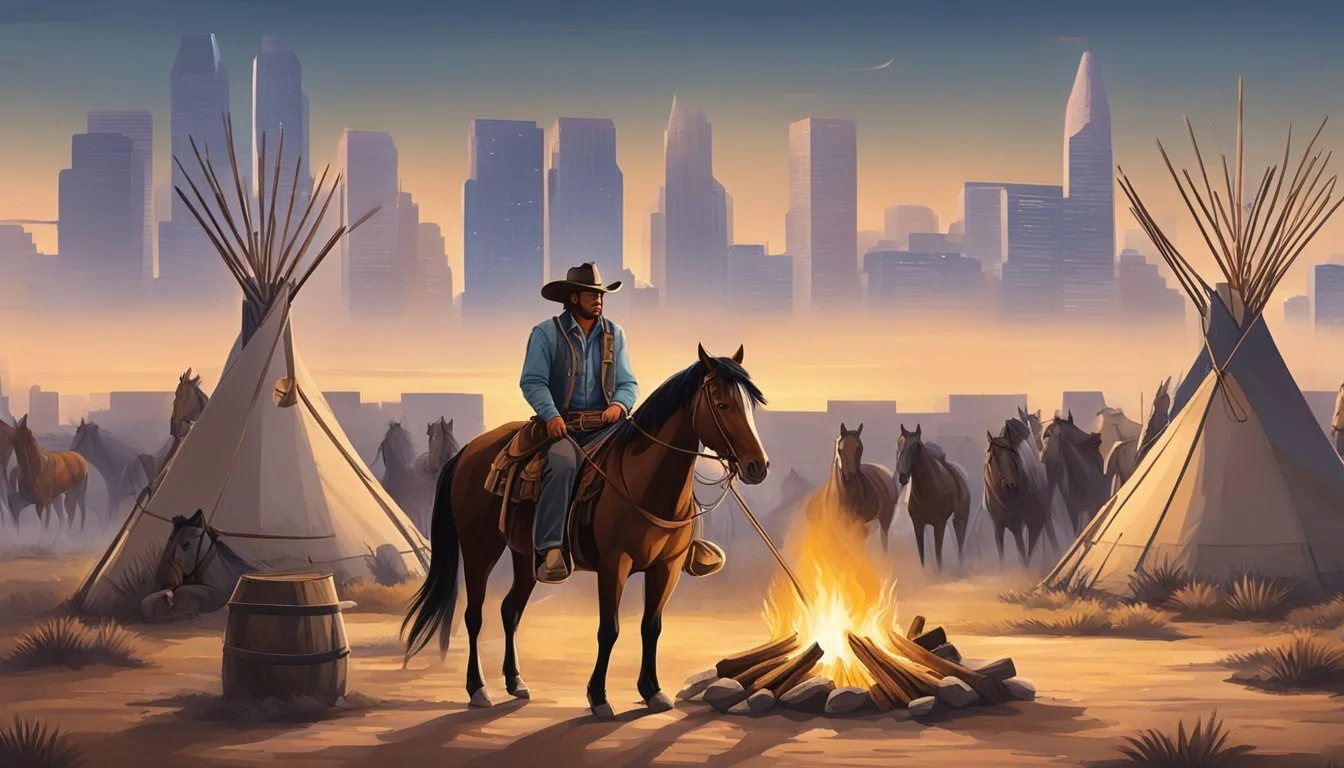The Texas Cowboy's Relationship with Native American Tribes
A Historical Overview
The image of the Texas cowboy and Native American tribes is deeply rooted in American West folklore, often portrayed through a lens of conflict and romanticized depictions of the frontier. However, the historical reality of these relationships was complex and multifaceted. Texas cowboys, who emerged during the 19th century as cattle herders and an integral part of the ranching economy, frequently encountered various Native American tribes whose ancestors had inhabited the region for thousands of years. These interactions ranged from violent clashes to peaceful trade and cooperation.
Understanding the dynamics of the cowboy and Native American relationships requires a nuanced consideration of the socio-political context of the time. The expansion of the American frontier brought cowboys into direct contact with Native American tribes such as the Comanche and Apache. While conflicts did occur, this period also saw instances of cowboys adopting Native American practices, including aspects of their culture and knowledge of the terrain, which were instrumental for survival and success in the challenging environment of the Texas plains.
The interactions shaped by mutual respect and collaboration, however, have received less attention in popular retellings of the American West but were no less significant. When cowboys and Native Americans were not pitted against one another over land and resources, they sometimes found common ground as traders and negotiators, a testament to the diverse and evolving relationships that defied the simple 'cowboys versus Indians' narrative.
Historical Context of Texas Cowboys
Tracing the evolution of Texas cowboys involves exploring their Spanish roots, the rise of the cattle driving industry, and the dynamic interactions with Native American tribes as settlers moved westward.
Early Influences and Origins
The vaqueros, Spanish for cowboys, were the first to manage large herds of cattle on the open lands of what is now Mexico and the southwestern United States. Originating in the 16th century, these skilled horsemen and cattle handlers set the foundation for the cowboy tradition. Mexican vaqueros, known for their expert riding and roping techniques, greatly influenced the practices adopted by American cowboys.
The Rise of the American Cowboy
With Texas becoming a part of the United States following its annexation in 1845, and especially after the Civil War, the American cowboy emerged as an iconic symbol of the frontier. These cowboys often managed herds of Longhorn cattle, a breed known for its hardiness and able to thrive in the Texas climate.
Expansion of Cattle Driving
Post-Civil War economic conditions and the increasing demand for beef in the Northeast fueled the expansion of cattle drives. Notably, the Chisholm Trail became one of the most famous cattle trails, used to drive cattle from Texas ranches to Kansas railheads for shipment to the East.
Cowboys and Native Americans: A Complex Relationship
The relationship between cowboys and Native American tribes was multifaceted, ranging from cooperative trade agreements to violent clashes. As cowboys drove cattle along cattle trails crossing indigenous lands, tensions often arose. Some tribes took to raiding cattle herds, while others, adapting to the encroachment, became cowboys themselves, playing a significant role in the cattle industry.
The narrative woven through the historical context of Texas cowboys reveals a tapestry of cultural convergence, economic necessity, and the inevitable impacts of westward expansion upon the indigenous peoples of the American frontier.
Interactions and Conflicts
The dynamic interactions between Texas cowboys and Native American tribes comprised a mix of alliances, trade, confrontation, and the undeniable impact of westward expansion.
Alliances and Trade
Cowboys and Native American tribes, such as various Comanche bands, sometimes entered into mutual alliances to benefit from trade. These partnerships often involved the exchange of goods such as horses, cattle, and food supplies. Both cowboys and Native Americans utilized trade networks to enhance their economic standings and secure resources that were otherwise difficult to obtain.
Confrontations and Wars
Tensions between cowboys and Native American tribes also led to violent confrontations and wars. For instance, Texan cowboys sometimes participated in military campaigns alongside the U.S. Cavalry against certain tribes. The aim was often to suppress Native resistance or to gain control over land and resources. This military involvement included small-scale skirmishes as well as larger conflicts, such as those with Comanche tribes that resisted encroachment on their territory.
Impact of Westward Expansion
Manifest Destiny drove relentless westward expansion, leading to significant cultural and territorial displacement of Native American tribes. With the influx of settlers and the establishment of Indian reservations, the traditional lifestyle of tribes was severely disrupted. Cowboys were often directly involved in this expansion, both as participants in seizing land and as benefactors of the new commerce opportunities that arose from the newly claimed territories. The shift in territory control and economic focus caused profound changes, not only to the land but also to the cultural fabric of both cowboys and Native American tribes.
Cultural Exchange and Influence
The relationship between Texas cowboys and Native American tribes is marked by a significant cultural exchange, with the adoption of techniques and traditions shaping the cowboy culture.
Adoption of Native American Practices
Cowboys adopted several Native American practices to enhance their skills in herding and ranching. Most notably:
Horseback Riding: Native tribes were adept riders, and cowboys learned advanced riding techniques that allowed them to manage cattle herds effectively.
Lasso Use: The lariat, an essential tool for cowboys, has roots in techniques used by Native Americans for capturing game or during warfare.
The Integration of Traditions
The symbiosis of cowboy and Native American traditions is evident in:
Rodeo: It has origins in the competitive spirit of Native games and cowboy skills exhibitions, leading to an organized sport that celebrates both heritages.
Branding: While branding cattle was not a Native practice, the importance of unique symbols in Native culture influenced how cowboys adopted distinct branding marks for identification.
Life on the Range
Life on the Texas range was defined by the arduous daily routines of cowboys and their often complex relationships with neighboring Native American tribes.
Daily Work and Duties
Cowboys on the Texas plains had a litany of responsibilities that began at dawn and extended well into the evening. A typical day involved:
Herding: Maneuvering cattle across vast expanses to find fresh pastures and water sources.
Branding: Marking livestock with a brand to signify ownership.
Maintenance: Repairing fences and structures that contained the herds.
Animal Care: Monitoring the health and wellbeing of the cattle, treating any illnesses or injuries.
Their duty to protect the herd extended beyond simple herding; cowboys would keep vigil to safeguard the cattle from predators and theft.
Living alongside Native American Tribes
The relationship between cowboys and Native American tribes was nuanced:
Shared Skills: Cowboys often adopted Native American techniques for managing herds and learned from their understanding of the landscape.
Cultural exchange: Elements of cowboy attire and practices had roots in Native traditions.
Conflict and Cooperation: There were moments of alliance as well as conflict with tribes like the Comanche, as the push for territory often led to skirmishes. Yet, at times, common interests fostered temporary peace and mutual assistance.
Reservations and Terrains: As Native peoples were displaced to reservations, the dynamics on the range changed, leaving a deep and complex legacy.
Cowboys had to navigate these relationships with care, as each interaction could lead to positive exchange or heightened tension.
Legacy and Modern Perspectives
The Texas cowboy and the diverse Native American tribes share a deeply intertwined history, evolving perceptions, and a mutual influence on heritage preservation and contemporary relationships.
Historical Interpretations
Historians have observed the Texas cowboy as an iconic figure of the Old West, often romanticized in popular culture and literature. The University of Oklahoma Press and other academic institutions have published books detailing the complex interactions between cowboys and Indigenous peoples on the western frontier. These interactions ranged from violent conflicts on frontier towns to cooperative relationships in managing cattle and land.
Preservation of Heritage and Traditions
Heritage and culture preservation is vital for both cowboys and Native American tribes. The rodeo showcases skills that originated in the day-to-day tasks of the cowboy, rooted in the vaquero traditions of the American West. Similarly, Indigenous tribes maintain cultural ceremonies and traditions that reflect their historical roots and narratives. Both communities work to preserve these aspects of their cultures as a testament to their storied pasts.
Contemporary Cowboy and Native American Relations
Today, the ranks of Texas cowboys include individuals from a variety of ethnic backgrounds, including those of Native American descent. Contemporary relations are shaped by shared interests in land use, heritage conservation, and cultural recognition. Collaboration occurs in areas such as modern rodeos and heritage festivals, which often honor the contributions of Indigenous peoples alongside the legacy of the Texas cowboy.
Conclusion
The narrative of cowboys and Native Americans has transcended generations, encapsulating more than just a series of historical events—it represents a complex web of cultural relationships. As the timeline of the American West unfolded, the interactions between these two groups contributed to a shared, albeit challenging, legacy.
Cowboys, often romanticized as rugged and independent frontiersmen, did not exist in isolation; their lives and work frequently intersected with Native American tribes. These interactions were at times cooperative, with cowboys learning from the tribes’ knowledge of the land and animal husbandry. Elsewhere, these exchanges could lead to conflicts, reflective of the broader tension between European settlers and indigenous populations over territory and resources.
The legacy left behind by these interactions forms an integral part of the American ethos. It is characterized by moments of mutual respect and shared experiences, yet marred by episodes of immense struggle and confrontation. Understanding the multifaceted nature of cowboy and Native American relations allows for a clearer insight into the growth of the American West.
Cultural assimilation and exchange were byproducts of these encounters. As such, the cowboy and Native American relationship did not just shape the historical narrative but influenced the cultural landscape that followed. This nuanced account recognizes both the rivalry and the camaraderie that framed the cowboy-Native American dynamics, offering a more balanced view of the American past.





